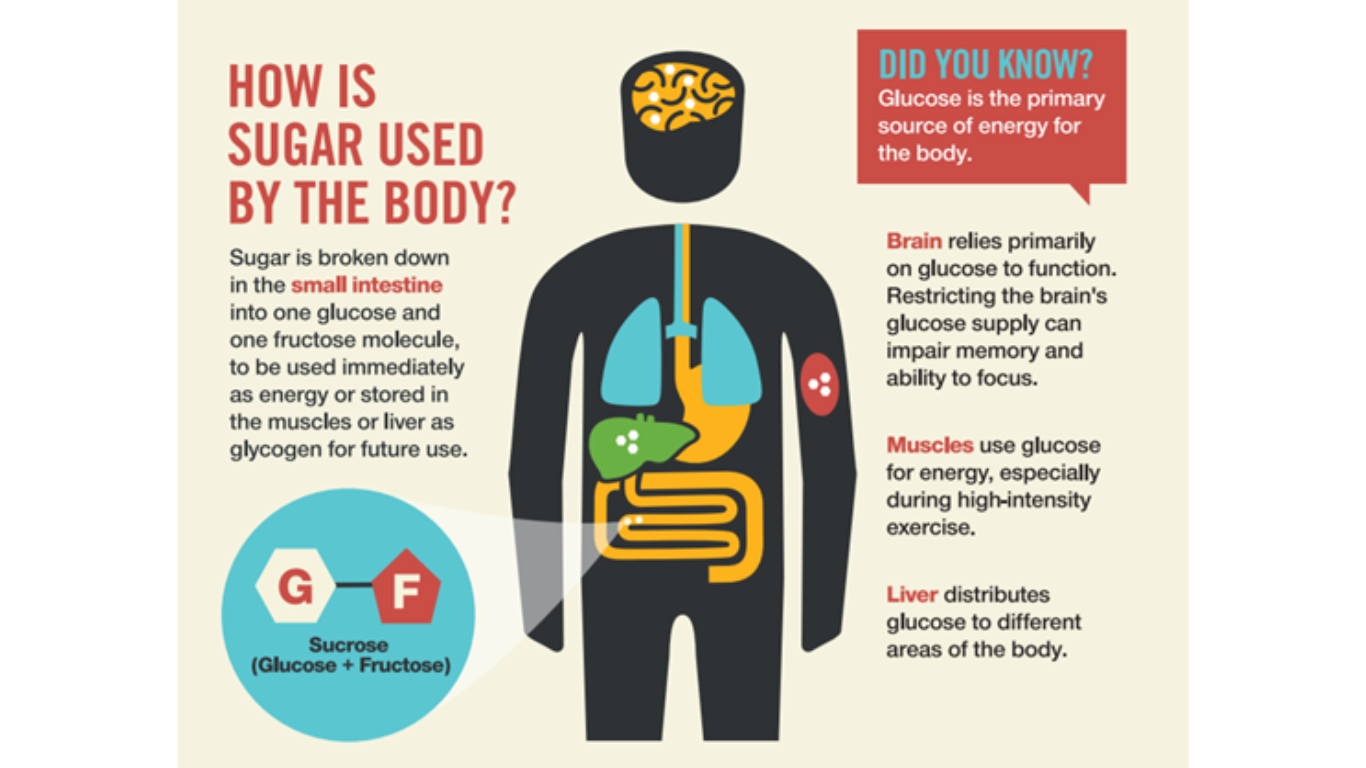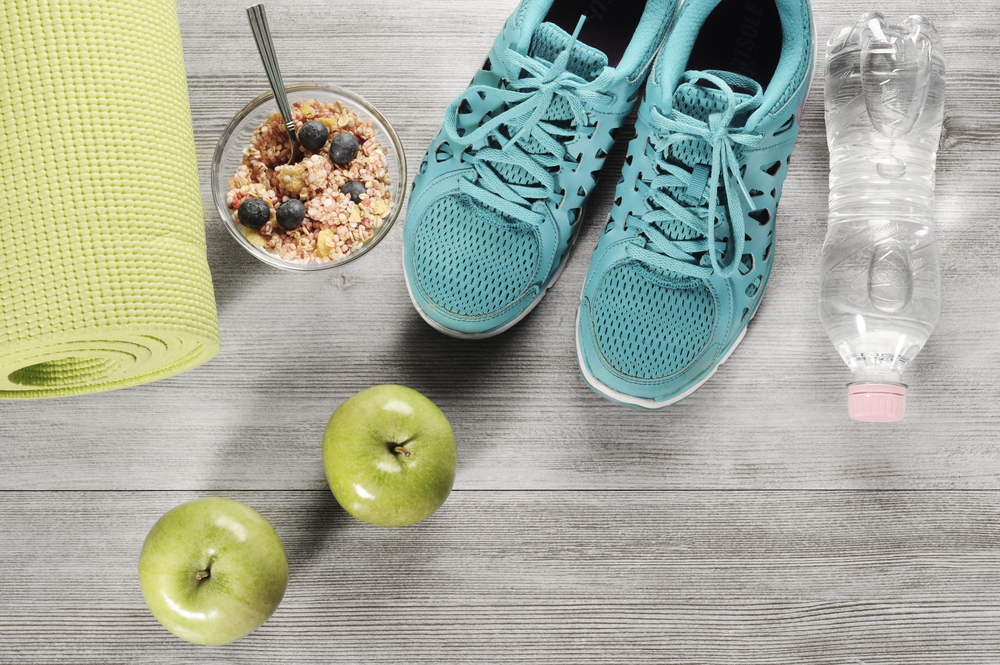How does the body use carbohydrate?

To use carbohydrate (which consists of sugars, starches, and fibre) for energy, it must first be converted to glucose. Glucose is the primary fuel source for the brain and red blood cells and is also the preferred energy supply to support the muscles during intensive physical activity. Each gram of carbohydrate (sugars and starches) provides 4 calories of energy. Fibre also provides energy at 2 Calories per gram. Glucose can be used to provide immediate energy to the body’s cells or is stored in small quantities for future use. Excess glucose is stored as glycogen in the liver as well as the muscle. Glycogen and other molecules (such as some amino acids from proteins and glycerol from stored fatty acids) can be converted back to glucose when the body needs energy and blood glucose levels are low. On the contrary, if glycogen reserves are full, excess glucose may be stored as fat for future use.
Should athletes eat a lot of carbohydrate, including sugars?
Adequate carbohydrate intake is essential for optimal performance in physically active individuals.
The Dietary Reference Intake report recommends that all Canadians consume 45 to 65% of their total calories from carbohydrates, including grain products, fruits, vegetables, and legumes. This range ensures sufficient intakes of essential nutrients and is based on evidence that suggests a role for carbohydrates in the prevention of chronic disease (1). Excess intake of carbohydrate beyond meeting the body’s daily normal energy requirement and supporting physical activity could be stored in the body as fat.
A recreational athlete who regularly eats a carbohydrate-rich diet will probably have enough carbohydrate stored to fuel their activities. People who are very active (e.g. athletes) on the other hand have particularly high carbohydrate requirements to ensure adequate fuel stores and optimal performance. Especially during high-intensity exercise, the active muscle relies heavily on carbohydrate-derived energy sources (such as muscle and liver glycogen, glucose in the blood).
The body can store energy from consumed carbohydrates as glycogen in the muscles and liver, however storage capacity is limited (e.g. liver glycogen is depleted after about 28 hours of fasting). Eating carbohydrates before, during and after high intensity exercise can help ensure adequate stores available to be used for energy.
Generally, consuming only water is sufficient to stay hydrated during activities lasting less than 60 minutes, however very active Canadians or those exercising at a high intensity (e.g. athletes) may benefit from adjusting their intakes of energy and certain nutrients, such as carbohydrate based on their individual goals.

What is carbohydrate loading?
Traditionally, “carbohydrate loading” was used by athletes as a dietary training strategy over the 3 days prior to an event, which was designed to maximize muscle glycogen stores. Glucose, the body’s preferred fuel, is stored as glycogen in muscles and in the liver. When muscles are exercised, they use both fats and carbohydrates as fuel. As the intensity of the workout increases, muscles depend more and more on carbohydrates, from glycogen stored in the muscles and liver, and glucose in the blood. For most people, glycogen stores are enough to keep them going during exercise. But if an activity lasts longer than an hour, glycogen stores may get used up, tiring muscles.
This classic method used by endurance and/or elite athletes exhausted glycogen stores through intense exercise coupled with a low-carbohydrate diet. When glycogen stores were depleted, a high carbohydrate diet would then be consumed (where carbohydrate provides >90% of total Calories). Athletes often experienced low blood glucose, irritability, and chronic fatigue by adhering to this regime. Today, evidence suggests that similar results, without the negative side effects, can be achieved by gradually decreasing the amount of exercise during the six days prior to competition while progressively increasing total carbohydrate intake up to 70% of total calories in the last 72 hours before the event.
To learn more about sugars and physical activity, visit our webpage Sugars and Physical Activity, or download our resources:
- Infographic - Carbohydrates and Physical Activity
- Clips on Sugars - Balancing Food and Activity for Healthy Weights
- Clips on Sugars - Fuel for Your Activity
Reference:
- Institute of Medicine. Dietary Reference Intakes for Energy, Carbohydrate, Fibre, Fat, Fatty Acids, Cholesterol, Protein, and Amino Acids. Washington, DC: The National Academies Press; 2005.


